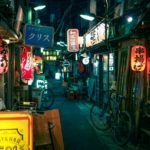Tajiroshima: Japan’s Cat Island

Love cats? Tajiroshima, a tiny island off Japan’s Miyagi Prefecture, is cat heaven. Some 800 cats climb up to window-sills and hang out, waiting for handouts. Small packs run through the streets of the tiny Japanese town, climb aboard fishing boats, laze in the sun on porches, and sometimes fight gang wars with crows over fish and control of the island. And they interact with cat-loving tourists — but only on their own terms, of course.
Tajiroshima wasn’t always a heaven for cats. Long ago its source of income came from the silk business. At that time, cats were working animals — mousers who kept predator mice away from the precious silkworms. In 1602, cats became a key protector of Japan’s economy. Rats threatened to destroy Japan’s silkworm industry, so the government ordered a “cat draft.” All pet cat owners had to release their cats into the streets to catch the rats. The residents of the island continued to care for the increasingly feral cats, feeding them and letting them roam the island freely. Many believed their gods would reward them for their kindness with wealth and good luck.
Until the 1950s over a thousand people lived on the island, but by the 1970s, the silk-industry had collapsed. Younger people looked for work off the island and after the only school closed in 1989, mostly elderly people remained.
In 1602, rats threatened to destroy Japan’s silkworm industry, so the government ordered a “cat draft.” All owners of pet cats had to release their cats into the streets to catch the rats.
Still, there was one bright spot. Each year, more than 3000 tourists visited the island to get up close and personal with the cats, and Tajiroshima took its place as one of Japan’s more popular cat islands. By 2008, some 12,300 people made their way to the island, where for every one of the 100 people who still lived on the island there were 400, then 600, then 800 cats.
But in March 2011, Tajiroshima took a big hit during the earthquake and tsunami. Close to the epicenter of the quake, the island’s port areas flooded. Giant waves destroyed the sea wall, fishermen’s sheds, and boats. Mudslides blocked the main road. The earthquake reduced many homes to rubble. Most of the cats and humans survived March 11, 2011, and many residents believe that their island only survived because the gods wanted to protect the cats and those who care for them.
In the wake of the earthquake and tsunami, a group calling themselves Nyanko (Kitty) Republic began taking steps to save the island. The association organized repair equipment, rebuilt buildings, and reached out for donations via the Web. The publicity attracted donations and volunteers. While the island is not completely back to normal, the cats now have steady food (they no longer depend on tourists for handouts), and some vet care — a German veterinarian comes to the island twice a month.

Ready for your own cat heaven experience?
Put on your walking shoes and head for the port in Ishinomaki, a short taxi ride from the JR Ishinomaki Station, where the Ajishima ferry awaits. It’s a 45 minute sail to Nitoda Port, the ferry’s second stop. That’s where your cat experience begins. Watch the cats fight over fish, catch rays by the sea, and generally look cute.
Now it’s time to hike uphill toward the center of the island, where a giant cat (think Kung Fu Kitty) with one paw raised welcomes you to a cluster of cat-shaped cottages and a campground. This is Manga Island, a gift to Tajiroshima from famous mangaka (manga artist) Shotaro Ishinomori, creator of Cyborg 009, Kamen Rider and other famous feline images.
Want to spend the night? Between April and October, you can sleep in your own kitty cottage if you book at least two weeks in advance.
Of course there is a cat shrine, too. What would cat heaven be without one? According to legend, a rock used to hold down a fisherman’s net killed one of the island’s cats. The fishermen buried the cat and created a shrine at that place. Today it’s a popular spot for cats, who like to hang out, hoping for human attention. Visitors’ leave cat-related offerings, including piles of cat-painted stones and Hello Kitty figurines.
Nyanko Republic is about 200 meters from the shrine. There you can sit and eat lunch and shop for local products and cat-themed souvenirs.
Then it’s back to Nitoda with its little shop, a couple of vending machines and more cats enjoying their bucolic life on their own personal island. If you’re lucky, you may get there in time to see “the feeding,” where an dozens of cats rush to an old lady who brings their daily kibble.
And now it’s time to catch your ferry back to the mainland. Don’t be late. If you miss your trip back, you’ll be spending the night with the cats.
Practical considerations
This is Japan. Most information is in Japanese, so if you don’t have a Japanese friend to help you, I suggest finding an English-speaking travel agent at an agency in almost any large train station to help you. Tajiroshima is about three hours north of Tokyo, so spend a night or two in Ishinomaki before you go. Ishinomaki is famous for manga, so if you’re an otaku (manga fan), don’t miss the downtown area.
Buy your ferry tickets early and plan with the weather in mind. In case of high wind or foul weather, the service will be canceled. Each ferry carries only about 30 people, and ferries only sail two or three times a day, depending on the season. The ferry terminal has small coin lockers and a toilet. The ferry also has a toilet.
Other tips to keep in mind:
- In the past, cats were dependent on the generosity of tourists for food. Now, with food provided by Nyanko Republic, they have a regular diet. Unfamiliar food may make them sick, especially the kittens, so please do not feed the cats.
- Be careful when taking pictures on the road. Yield to vehicles. The islanders have the right of way.
- Do not chase the cats. Be gentle with the kittens. Don’t take them away from their mothers.
- Do not enter the residences without permission. Do not follow cats into people’s homes.
- Wear comfortable shoes and bring your own snacks and water.
- Take only pictures, leave only footprints (and donations).
- There is no garbage disposal facility on the island. Pack your garbage out.
And I almost forgot: don’t bring your dog!









2 thoughts on “Tajiroshima: Japan’s Cat Island”